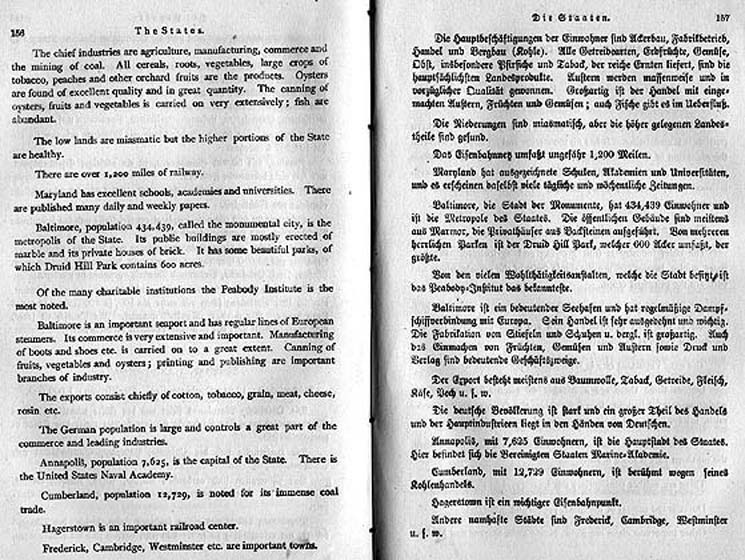
 |
 |
|
The chief industries are agriculture, manufacturing, commerce and the mining of coal. All cereals, roots, vegetables, large crops of tobacco, peaches and other orchard fruits are the products. Oysters are found of excellent quality and in great quantity. The canning of oysters, fruits and vegetables is carried on very extensively; fish are abundant. The low lands are miasmatic but the higher portions of the State are healthy. There are over 1,200 miles of railway. Maryland has excellent schools, academies and universities. There are published many daily and weekly papers. Baltimore, population 434,439, called the monumental city, is the metropolis of the State. Its public buildings are mostly erected of marble and its private houses of brick. It has some beautiful parks, of which Druid Hill Park contains 600 acres. Of the many charitable institutions the Peabody Institute is the most noted. Baltimore is an important seaport and has regular lines of European steamers. Its commerce is very extensive and important. Manufacturing of boots and shoes etc. is carried on to a great extent. Canning of fruits, vegetables and oysters; printing and publishing are important branches of industry. The exports consist chiefly of cotton, tobacco, grain, meat, cheese, rosin etc. The German population is large and controls a great part of the commerce and leading industries. Annapolis, population 7,625, is the capital of the State. There is the United States Naval Academy. Cumberland, population 12,729, is noted for its immense coal trade. Hagerstown is an important railroad center. Frederick, Cambridge, Westminster etc. are important towns. |
|
This Internet publication has been supported by a grant from The Equitable Foundation. |